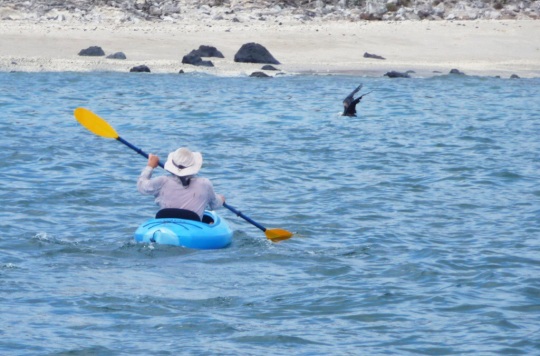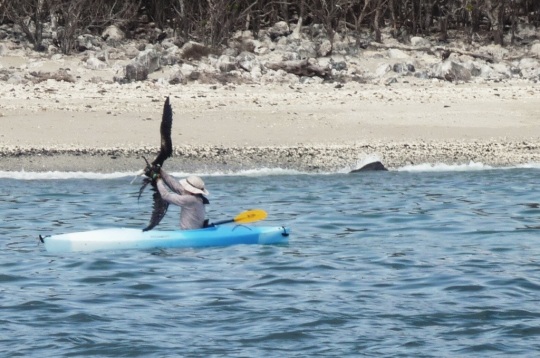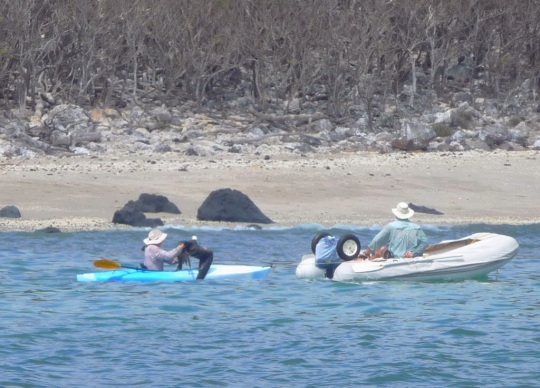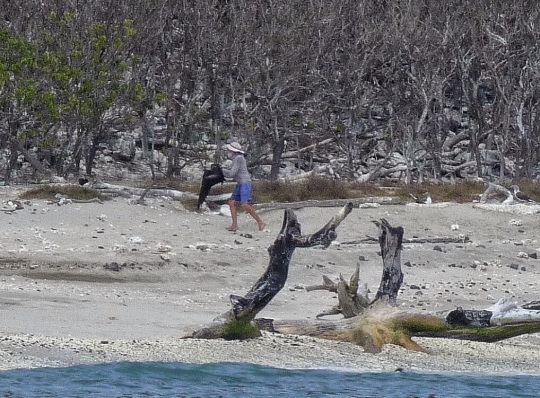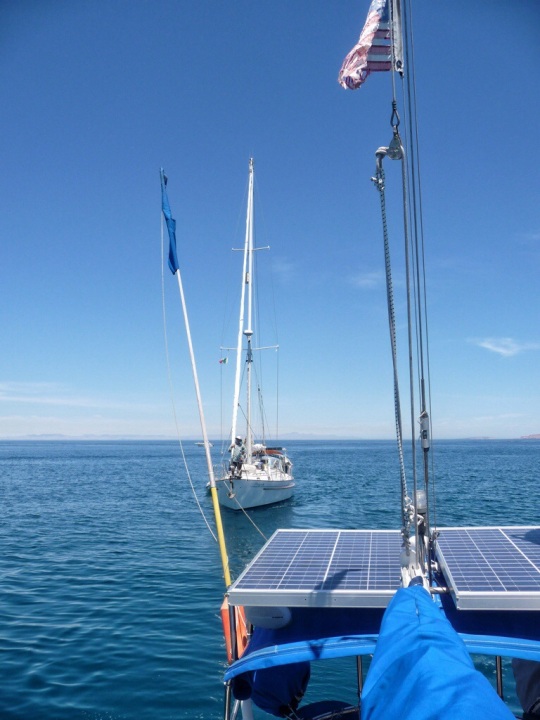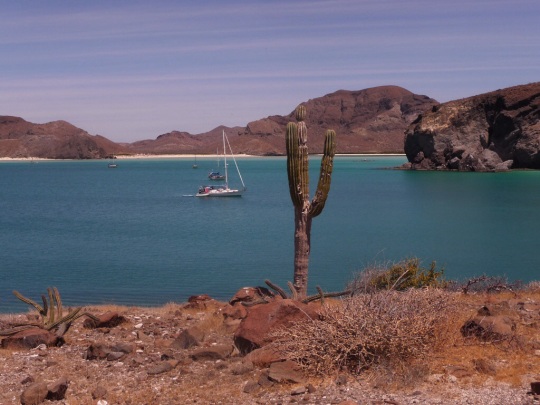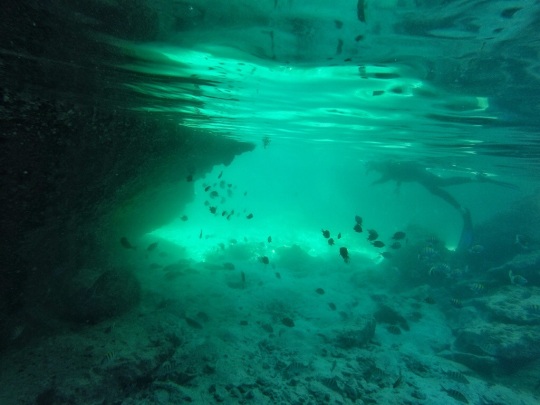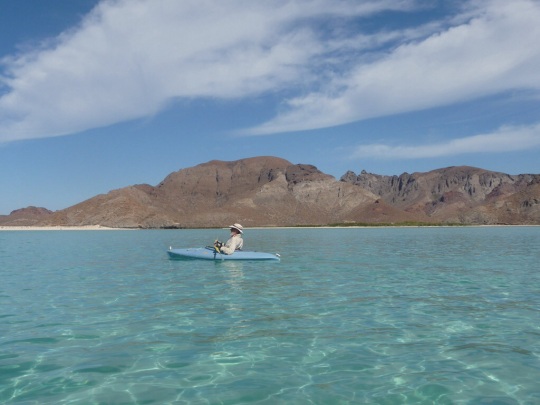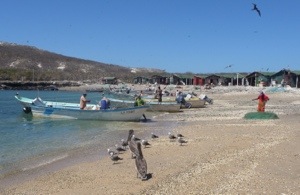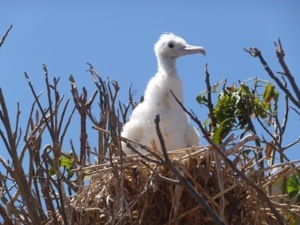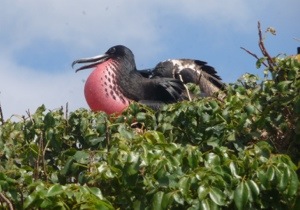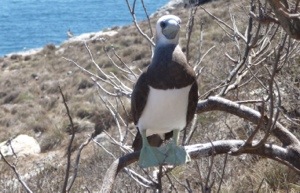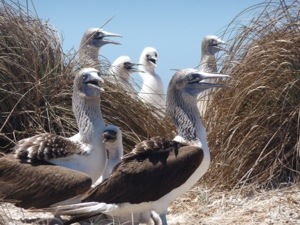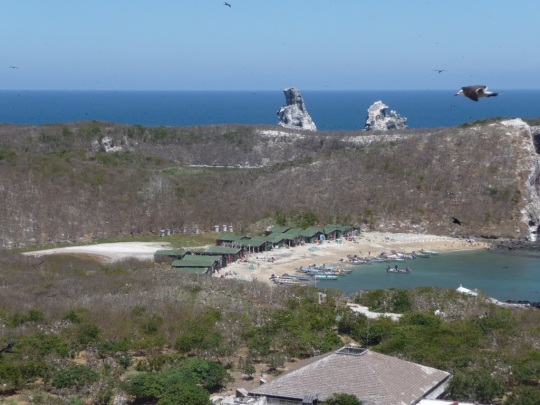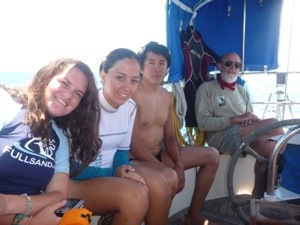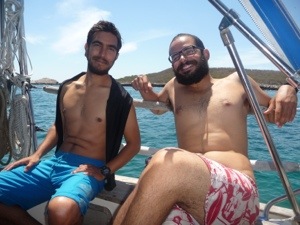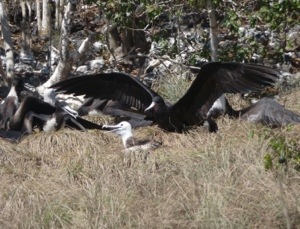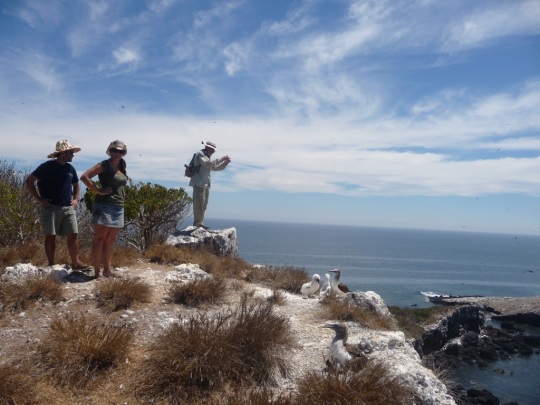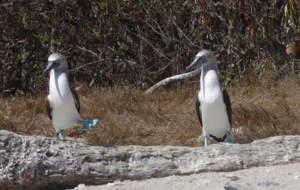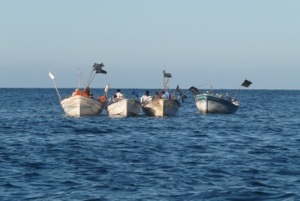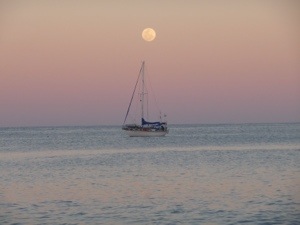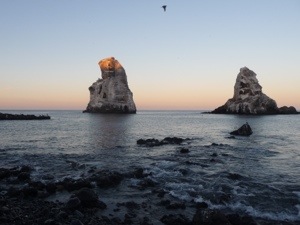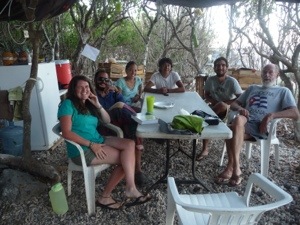Two Rescues
In the history of sailing tales, there are many stories of epic rescues from danger, and just in case family and friends got worried by the title of this blog, we did not capsize, run aground, get run over, hit by a tropical storm, or otherwise endanger ourselves in the Sea of Cortez. However, we did participate in two rescues.
After leaving La Cruz April 2, only three days after getting back from Copper Canyon, we once again mostly motorsailed in a headwind or no wind up to Mantenchen Bay near San Blas to overnight, then across the 40 miles to Isla Isabel, the island of thousands of nesting birds. ( See the post Island Mystique to see how we viewed Isla Isabel during our eight-day stay a year ago.)
One afternoon Nikk and I were sitting on Balance, watching the island, pinnacles, sea and shore, when we saw a female Magnificent Frigatebird struggling in the water. Frigatebirds have huge wings which don’t have the oils needed to resist waterlogging, so they can’t land in the water and fly off again like many seabirds do. We watched the bird flapping, hoping she would drift over to shore, but instead she was only being taken near shore by the current, and soon would be past the island. Nikk hopped into my kayak and paddled to effect a Frigatebird Rescue, and was soon joined by Ian from our buddy boat Freyja.
It looks like the bird is struggling, but according to Nikk she was so tired that she just let Nikk fold up her wings and stow her between his legs in the cockpit of the little kayak. He did face that long beak away from this body, in case any readers were worried about Nikk’s delicate parts being in danger. Ian towed Nikk, kayak and bird to shore with his dinghy, and the bird was carried to a small tree, since frigatebirds nest in trees on the island. The poor bird was so tired that it soon fell out of the tree, and it got too dark to see her on the ground, but the next day she wasn’t there anymore. There are no predators except humans on the island, so birds can safely nest and rest on the ground. During our five days anchored at the island we watched many frigatebirds soar, and wondered if we were watching the bird we saved from a watery grave.
On April 8 the voyage of the “vagabundos” continued across the Sea of Cortez to Baja California Sur. Ian received a weather report on his SSB that the next few days would see NE, and then light SSW winds. So much for weather reports, we had 15-20 knot winds NW on the nose, and had to motorsail first west, then north towards Mazatlan, going way out of the normal sailing course for La Paz. Instead of taking a little over 2 days to reach Puerto Ballandra, 12 miles north of La Paz, it took 2 days and 18 hours. Freyja kept falling further and further behind, due to babying their engine which had problems with fouled fuel filters. Balance had to anchor at Puerto Ballandra in the dark at midnight, surviving somewhat ferocious headwinds the last 10 miles. We kept in touch with Freyja all the way across the Sea, and they were only about two hours behind us, but the next morning they were not in the anchorage, and were without their motor, which had conked out in the middle of the night, forcing them to tack back and forth in the strong headwinds. The next morning the winds died, and they couldn’t reach the anchorage, so we headed out to tow them in the last mile to Puerto Ballandra.
Puerto Ballandra was the perfect place to begin our weeks of traveling to desert islands and sheltered mainland coves; white coral sand beaches and clear turquoise/jade green water for snorkeling, mangrove estuary for paddling and birdwatching, rocky cliffs for hiking and scrambling, and all overarched by the blue sky, hot sun and high clouds during the day, and myriads of stars at night. Nikk helped Ian fix his engine, we enjoyed four nights at Puerto Ballandra, and then continued on our way, with no internet, no phone, and only the iPad to remind me that we had not traveled back in time at least twenty years.
Now it’s May 2, and we are spending three days in Puerto Escondido, an anchorage with a poor excuse for a marina (no tienda, no restaurant, no friendly guards, no marina lounge). We are half a mile away at the Hotel Tripui, in the middle of the desert, we walked here today to get internet where we didn’t need to sit on metal steps while checking email. I know, I know, I’m sounding like a spoiled whiny #@*ch, Marina RIviera Nayarit spoiled me. I’ll try to be more grateful that we have a secure anchorage in the protected bay, and that it was easy to rent a car yesterday to go get provisions in Loreto, about 15 miles away. Tomorrow we are going to hike up Steinbeck’s Canyon a ways, if you read The Log From the Sea of Cortez, you can read about his camping trip with Mexicans and mules up this very canyon to see petroglyphs in 1940. The giant cardon cacti are starting to bloom, just like the Saguaro, which look similar, do in Tucson in late April/early May. I hope some will be blooming up in the canyon, drawing birds and lizards.
